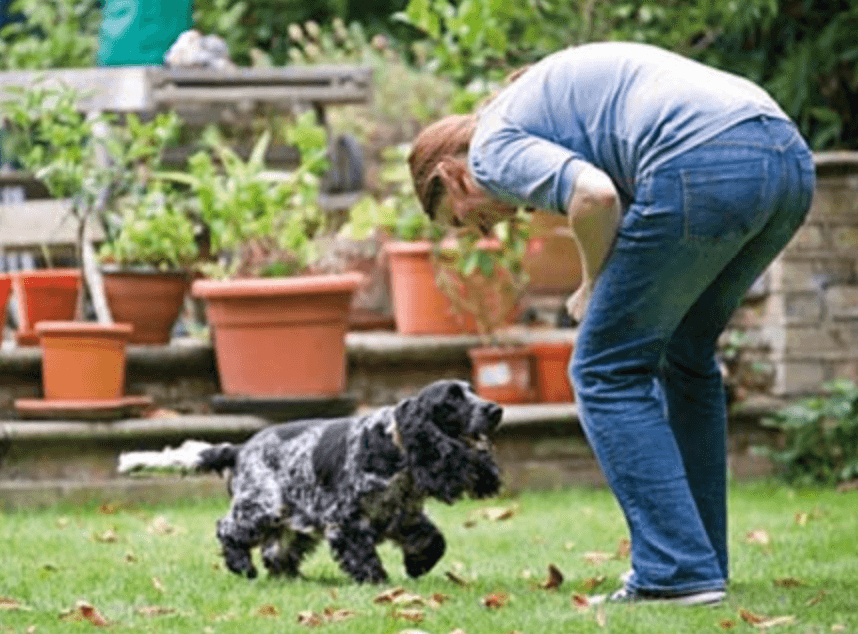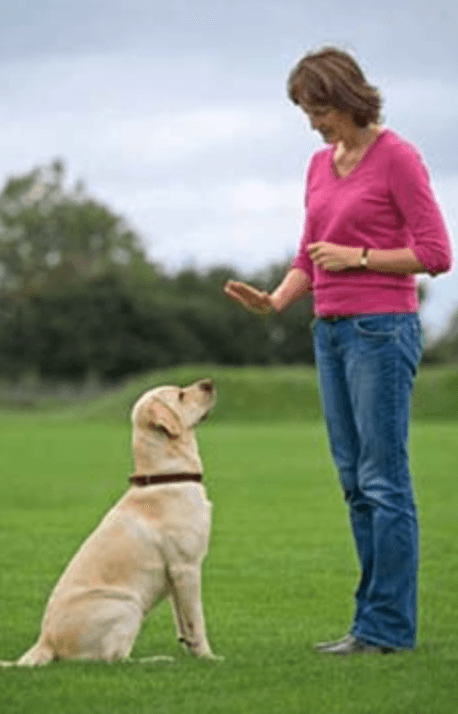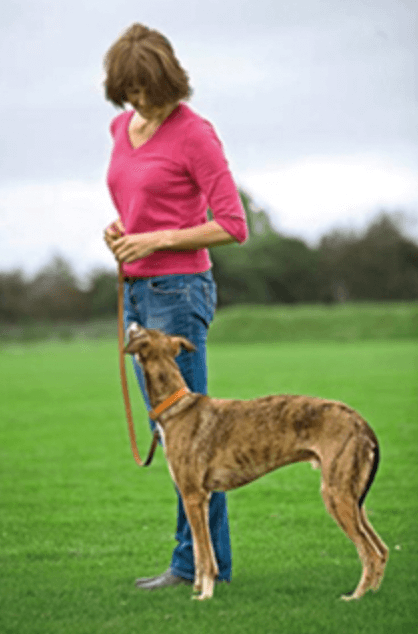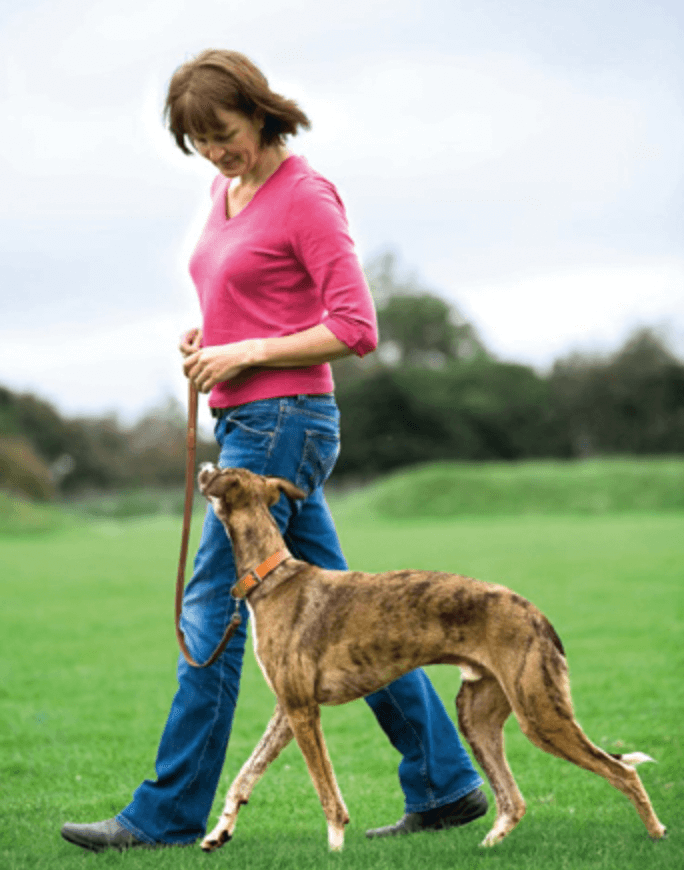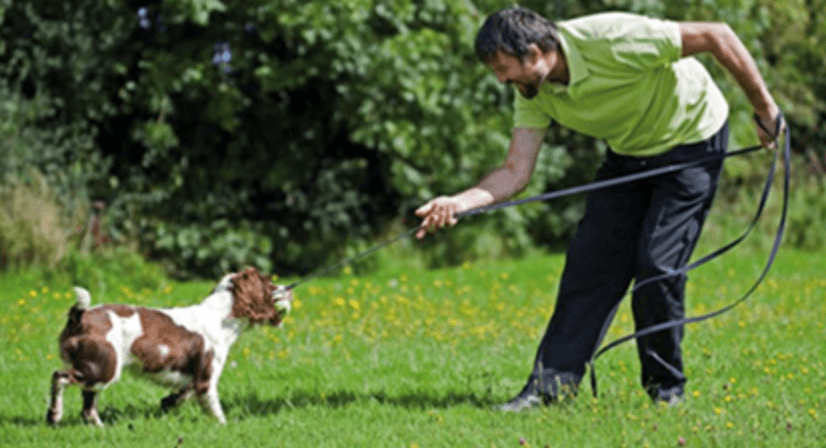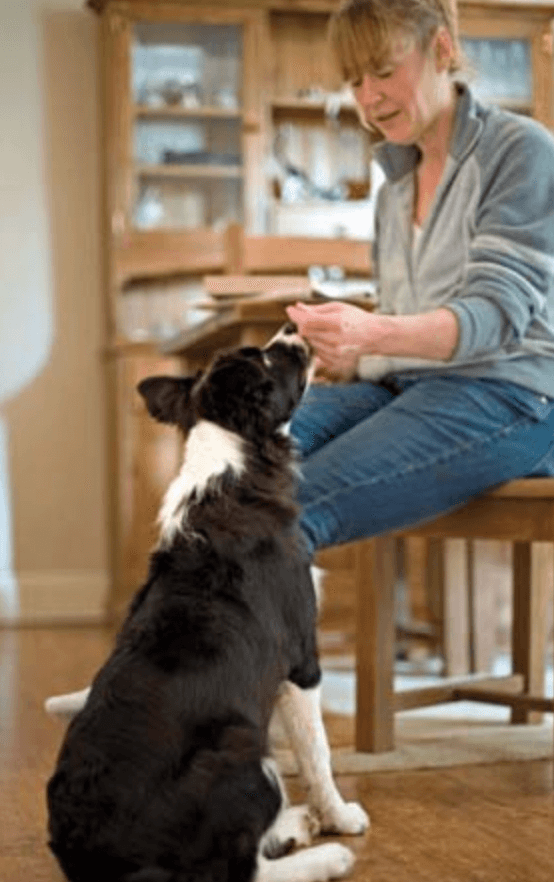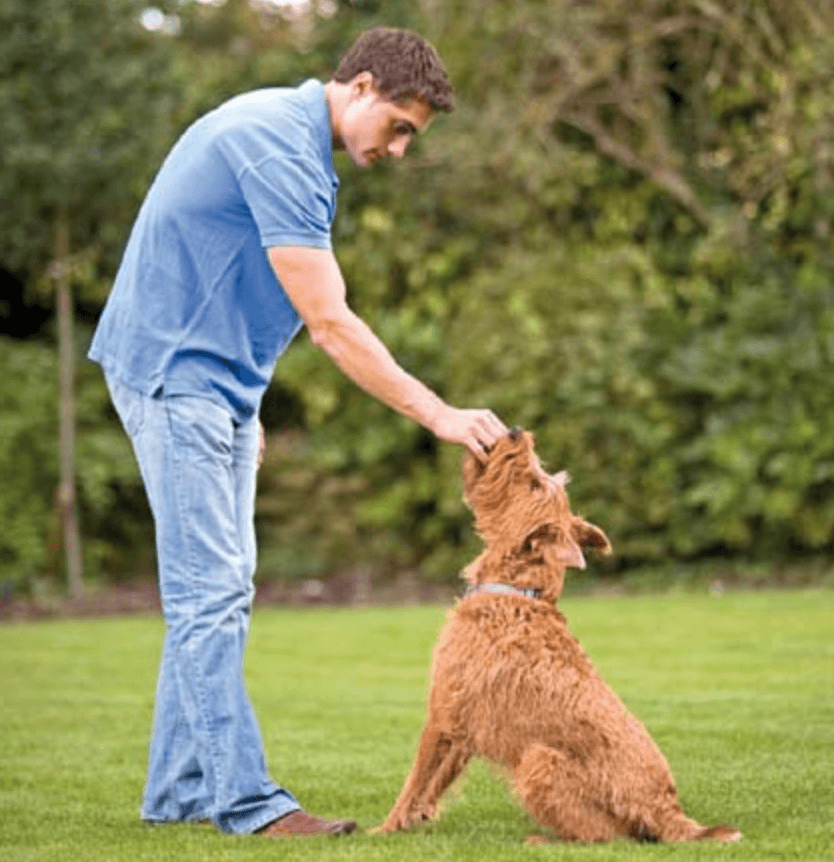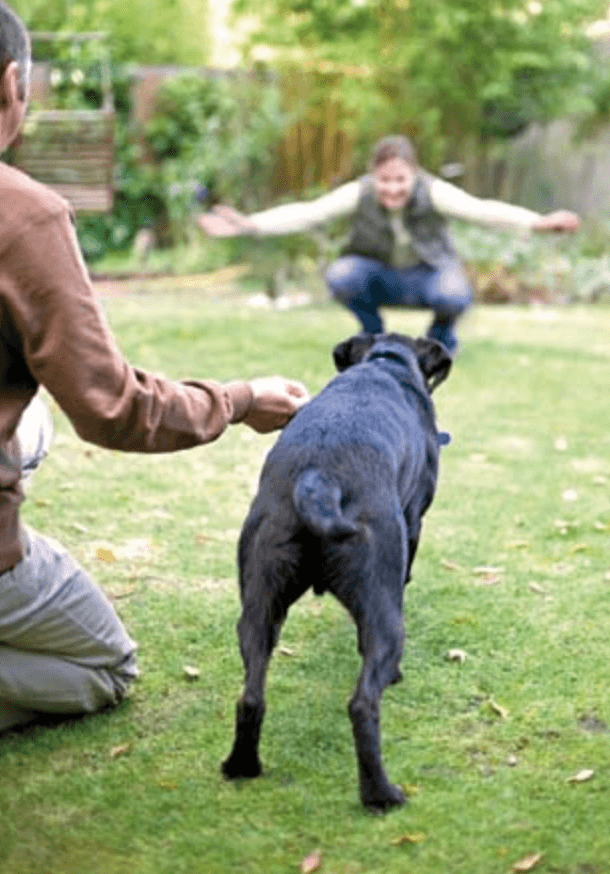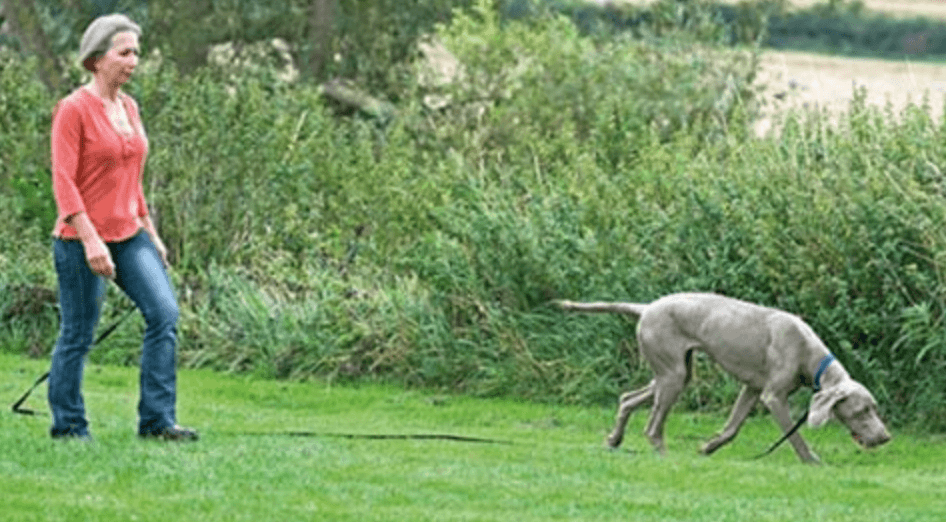
If you are out walking in the park, got scared and wondered what do you do if an off-leash dog approaches you while you are walking a dog, then read through these steps.
When an off-leash dog approaches you while you are walking a dog remember that dogs only act aggressively when they are left with no other choice.
If a dog shows aggression toward other dogs, try to reduce opportunities for conflict.
Do not let your dog off-leash, keep your distance from the other dog, and get your own dog focused on you.
I can clarify some information and give some further insights on how to train a dog to walk on a leash and instructions for off leash training.
Anybody’s dog must feel at ease and familiar with everything in his environment in order to avoid experiencing fear.
A well-adjusted dog who sees the outside world as safe will result from proper socialisation at the puppy stage.
A dog’s sense of security depends heavily on his bond with his owner. He is more inclined to trust and feel comfortable among other people if he trusts his owner.
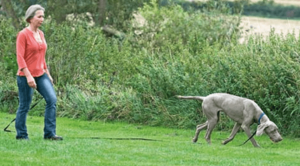
Dogs are unable to employ the flight option if they are trapped or on a leash, and they are left with no other options because the freeze option is ineffective.
All dogs should have the opportunity to run and play without a leash, but they must always remain in your sight and respond to your calls.
Better practice 💡
- The likelihood that your dog will become agitated will be reduced if you keep a safe distance from items that you are aware make him nervous.
- As soon as you see the first indications of anxiety or worry, move away.
- Never push a timid dog forwards so that he may “confront his fear.”
- Recognise his fear and make an effort to assist him in overcoming it without pressuring him.
- Fear-based aggression is a significant problem that you and your dog will require the assistance of a qualified pet behaviourist to resolve.
- The pet behaviourist will develop a treatment plan for you to follow that will include counter-conditioning to turn negative emotions into positive ones and desensitisation to the fear stimuli.
How to train your dog to walk on a leash
A well-trained dog is a great companion and may participate in your daily activities rather than being left at home.
Because he will be simpler to handle, you’ll have more time for play and other enjoyable things that make owning a dog such a delight.
You may express your desires to your dog and exert influence over his behaviour by teaching him the straightforward activities while they are on a leash.
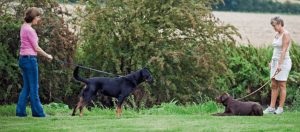
Even though teaching your dog to walk contentedly alongside you while wearing a slack leash is one of the most challenging exercises you can undertake, it will be well worth it.
To do this, a lot of patience is required when practicing how to train your dog to walk on a leash.
Regular walks with your dog are beneficial for both your health and that of your dog’s, since they promote both physical and mental well-being.
Teach your dog this ability as early as you can since a dog that enjoys strolling behind you on a loose leash will learn it quickly.
Practicing how to train your dog to walk on a leash in a variety of settings with increasing distractions after you’ve taught it.
How to leash train a dog best practices
Reward your dog after just one pace at the start of each training session and anytime you enter a new location until your dog understands what to perform.
Time needed: 7 days
How to train your dog to walk on a leash
- Strolling
When your dog is strolling with you, make the (right) hand gesture shortly before you leave. If he shifts out of position, stop moving and wait for him to come back before moving forwards.
%22%20transform%3D%22translate(1.7%201.7)%20scale(3.35156)%22%20fill-opacity%3D%22.5%22%3E%3Cellipse%20fill%3D%22%233b3a57%22%20rx%3D%221%22%20ry%3D%221%22%20transform%3D%22matrix(41.27634%2028.902%20-50.37553%2071.94372%20222.3%2073.5)%22%2F%3E%3Cellipse%20fill%3D%22%23a9abb4%22%20rx%3D%221%22%20ry%3D%221%22%20transform%3D%22matrix(-45.29057%208.03701%20-5.59516%20-31.5301%20164.1%2025.1)%22%2F%3E%3Cellipse%20fill%3D%22%23b6c69b%22%20rx%3D%221%22%20ry%3D%221%22%20transform%3D%22matrix(-44.33373%20-8.29683%206.46394%20-34.53975%2019.5%2033.8)%22%2F%3E%3Cellipse%20fill%3D%22%23bed368%22%20cx%3D%2231%22%20cy%3D%22188%22%20rx%3D%2246%22%20ry%3D%2246%22%2F%3E%3C%2Fg%3E%3C%2Fsvg%3E)
- Hand motions
Hand motion teach your dog to react to a signal with your hand. Your dog will immediately know to stay near by seeing your flat palm at your hip.%22%20transform%3D%22translate(1.4%201.4)%20scale(2.78906)%22%20fill-opacity%3D%22.5%22%3E%3Cellipse%20fill%3D%22%23fff2ff%22%20cx%3D%2279%22%20cy%3D%2216%22%20rx%3D%2293%22%20ry%3D%2273%22%2F%3E%3Cellipse%20fill%3D%22%23353e29%22%20rx%3D%221%22%20ry%3D%221%22%20transform%3D%22rotate(-71.5%20164%20-8.2)%20scale(38.46077%20160.83373)%22%2F%3E%3Cellipse%20fill%3D%22%234f6305%22%20rx%3D%221%22%20ry%3D%221%22%20transform%3D%22matrix(-149.9604%2058.06572%20-15.23745%20-39.3522%2073.9%20251.7)%22%2F%3E%3Cellipse%20fill%3D%22%239a4672%22%20rx%3D%221%22%20ry%3D%221%22%20transform%3D%22matrix(-21.668%205.25354%20-13.50326%20-55.69366%20131%2069)%22%2F%3E%3C%2Fg%3E%3C%2Fsvg%3E)
- Choose a side
To prevent misunderstanding when training, decide which side of you your dog should walk, and stay with it. You may teach your dog to walk on the opposite side of you if necessary after he understands what is expected of him.%22%20transform%3D%22translate(1.2%201.2)%20scale(2.47656)%22%20fill-opacity%3D%22.5%22%3E%3Cellipse%20fill%3D%22%23ffecff%22%20cx%3D%2258%22%20cy%3D%2229%22%20rx%3D%22167%22%20ry%3D%2265%22%2F%3E%3Cellipse%20fill%3D%22%23466c0f%22%20rx%3D%221%22%20ry%3D%221%22%20transform%3D%22rotate(-9.5%201219.4%20-490)%20scale(165.6478%2090.18066)%22%2F%3E%3Cellipse%20fill%3D%22%23943a6c%22%20rx%3D%221%22%20ry%3D%221%22%20transform%3D%22rotate(-102.8%2068.4%2013.7)%20scale(66.14746%2024.50813)%22%2F%3E%3Cellipse%20fill%3D%22%23f5faff%22%20rx%3D%221%22%20ry%3D%221%22%20transform%3D%22matrix(-31.56979%2052.74927%20-58.94601%20-35.27846%20149.4%2020.5)%22%2F%3E%3C%2Fg%3E%3C%2Fsvg%3E)
- Posture
Leash, rewards, and dog coordination are challenging at first. When necessary, stop and adjust your dog, praising him when he is in the right posture. When your dog approaches, just advance when you’re ready, and give him lots of praise.%22%20transform%3D%22translate(1.7%201.7)%20scale(3.39844)%22%20fill-opacity%3D%22.5%22%3E%3Cellipse%20fill%3D%22%23fff%22%20rx%3D%221%22%20ry%3D%221%22%20transform%3D%22matrix(-199.64222%2011.9576%20-3.23775%20-54.05698%2081.3%2044.2)%22%2F%3E%3Cellipse%20fill%3D%22%23456a21%22%20rx%3D%221%22%20ry%3D%221%22%20transform%3D%22matrix(-141.85666%2023.36894%20-14.52776%20-88.18796%20111%20193.5)%22%2F%3E%3Cellipse%20fill%3D%22%23fff%22%20cx%3D%22152%22%20cy%3D%2231%22%20rx%3D%2257%22%20ry%3D%2249%22%2F%3E%3Cellipse%20fill%3D%22%23903d6f%22%20rx%3D%221%22%20ry%3D%221%22%20transform%3D%22rotate(67.4%20-28.7%20117.2)%20scale(56.67157%2030.21392)%22%2F%3E%3C%2Fg%3E%3C%2Fsvg%3E)
- Leash size
Leash size decisions, when your dog is standing next to you and you are holding the handle at your waist, the leash should hang down slightly from the dog’s collar but should not touch the ground.%22%20transform%3D%22translate(1.7%201.7)%20scale(3.36719)%22%20fill-opacity%3D%22.5%22%3E%3Cellipse%20fill%3D%22%23fcf8ff%22%20rx%3D%221%22%20ry%3D%221%22%20transform%3D%22matrix(-60.67238%2028.01703%20-12.91974%20-27.9784%2032.7%2010.8)%22%2F%3E%3Cellipse%20fill%3D%22%232d3b00%22%20cx%3D%22142%22%20cy%3D%2272%22%20rx%3D%2266%22%20ry%3D%2266%22%2F%3E%3Cellipse%20fill%3D%22%23b8b8b7%22%20cx%3D%22113%22%20cy%3D%22253%22%20rx%3D%22124%22%20ry%3D%2228%22%2F%3E%3Cellipse%20fill%3D%22%234e4965%22%20rx%3D%221%22%20ry%3D%221%22%20transform%3D%22matrix(32.87511%205.23403%20-14.61481%2091.79606%2060%20132.2)%22%2F%3E%3C%2Fg%3E%3C%2Fsvg%3E)
- Jumping control
No jumping while you are walking, if your dog jumps up to obtain the treat, lift the treat higher and keep going until he stops leaping, then give him a treat.%22%20transform%3D%22translate(1.6%201.6)%20scale(3.22656)%22%20fill-opacity%3D%22.5%22%3E%3Cellipse%20fill%3D%22%2308012c%22%20rx%3D%221%22%20ry%3D%221%22%20transform%3D%22matrix(72.6703%2050.30332%20-35.08046%2050.67871%2050.5%200)%22%2F%3E%3Cellipse%20fill%3D%22%2399a750%22%20rx%3D%221%22%20ry%3D%221%22%20transform%3D%22matrix(254.57668%2014.68714%20-1.65869%2028.75054%20119%20118.9)%22%2F%3E%3Cellipse%20fill%3D%22%230f0f12%22%20rx%3D%221%22%20ry%3D%221%22%20transform%3D%22rotate(37.9%2010%2080.4)%20scale(48.54463%2027.92477)%22%2F%3E%3Cellipse%20fill%3D%22%234c551d%22%20cx%3D%22183%22%20cy%3D%2288%22%20rx%3D%2231%22%20ry%3D%2231%22%2F%3E%3C%2Fg%3E%3C%2Fsvg%3E)
- Power of thought
The power of thought keep the food lure in the hand that is closest to your dog so that he won’t want to walk in front of you and avoid using the leash to manage your dog.%22%20transform%3D%22translate(1.7%201.7)%20scale(3.44531)%22%20fill-opacity%3D%22.5%22%3E%3Cellipse%20fill%3D%22%23000113%22%20rx%3D%221%22%20ry%3D%221%22%20transform%3D%22rotate(-155.6%2047.9%2098)%20scale(31.26822%20103.66254)%22%2F%3E%3Cellipse%20fill%3D%22%23b9b2a0%22%20rx%3D%221%22%20ry%3D%221%22%20transform%3D%22matrix(159.03375%20-17.55749%204.82374%2043.6929%2042%2060)%22%2F%3E%3Cellipse%20fill%3D%22%23c78535%22%20rx%3D%221%22%20ry%3D%221%22%20transform%3D%22rotate(113.9%20-36.5%2076.7)%20scale(91.94989%2018.51363)%22%2F%3E%3Cellipse%20fill%3D%22%233f4652%22%20cx%3D%22108%22%20cy%3D%22135%22%20rx%3D%2265%22%20ry%3D%2232%22%2F%3E%3C%2Fg%3E%3C%2Fsvg%3E)
- Commend
Advance and commend take a step forwards right away, and once your dog follows, give him the treat and plenty of praise. Repetition is key. Reward yourself after two, then three, and so on.%27%20fill-opacity%3D%27.5%27%3E%3Cellipse%20fill%3D%22%23405500%22%20fill-opacity%3D%22.5%22%20rx%3D%221%22%20ry%3D%221%22%20transform%3D%22matrix(224.4023%20-69.60014%20121.71818%20392.43944%20677.4%20158.4)%22%2F%3E%3Cellipse%20fill%3D%22%23d0c381%22%20fill-opacity%3D%22.5%22%20rx%3D%221%22%20ry%3D%221%22%20transform%3D%22rotate(-177.6%20255.1%20387.4)%20scale(690.06582%20194.36297)%22%2F%3E%3Cellipse%20fill%3D%22%238787b4%22%20fill-opacity%3D%22.5%22%20rx%3D%221%22%20ry%3D%221%22%20transform%3D%22matrix(51.2039%20-394.24818%20128.74822%2016.72147%20220%20296.4)%22%2F%3E%3Cellipse%20fill%3D%22%233a3e4d%22%20fill-opacity%3D%22.5%22%20rx%3D%221%22%20ry%3D%221%22%20transform%3D%22matrix(-77.64074%20-16.07862%20102.67212%20-495.78492%2034.8%20209)%22%2F%3E%3C%2Fg%3E%3C%2Fsvg%3E)
- Rewards
Exercise The amount of paces you take each time before rewarding him should be gradually increased over the course of numerous sessions as you proceed in this manner.%27%20fill-opacity%3D%27.5%27%3E%3Cellipse%20fill%3D%22%23f3fdc5%22%20fill-opacity%3D%22.5%22%20rx%3D%221%22%20ry%3D%221%22%20transform%3D%22matrix(-9.46293%20244.54511%20-146.77797%20-5.67973%20590.5%20435.3)%22%2F%3E%3Cpath%20fill%3D%22%23636e2b%22%20fill-opacity%3D%22.5%22%20d%3D%22M358.4%20527.4l110%20319.5-639%20220.1-110.1-319.6z%22%2F%3E%3Cellipse%20fill%3D%22%23bfc3ad%22%20fill-opacity%3D%22.5%22%20rx%3D%221%22%20ry%3D%221%22%20transform%3D%22matrix(-72.54852%20-111.7071%20100.13406%20-65.03238%20125.6%20531)%22%2F%3E%3Cellipse%20fill%3D%22%2357507c%22%20fill-opacity%3D%22.5%22%20rx%3D%221%22%20ry%3D%221%22%20transform%3D%22rotate(-164.8%20197%20239)%20scale(83.49051%20139.53263)%22%2F%3E%3C%2Fg%3E%3C%2Fsvg%3E)
Better practice on how to train a dog to walk on a leash 💡
It takes time and care to train your dog to walk nicely on a leash, especially if she has been tugging for a while.
- Expect to halt up to 40 times throughout your first walk, so be consistent in your training.
- They will learn that pulling is not rewarding, therefore you will need to stop less frequently.
- When learning how to get a dog to walk on leash, just remember to unwind and enjoy this activity should be repeated until your dog stops pulling.
- If they forget and move ahead, stop right away and readjust them.
- Reward her for trying to maintain the leash’s looseness.
- Then you may loosen up and offer them greater freedom.
So far I have covered what do you do if an off-leash dog approaches you while you are walking a dog, and how you can also train your own dog to comfortable on a leash in the same situation.
Lets move on.
What is the least effective method to retrieve a dog that has got off leash?
You must comprehend how dogs learn in order to be an effective trainer especially when figuring out how to train your dog to be off leash.
When deciding which approach is least effective in retrieving a dog who has managed to slip off it’s leash, all practical leash training will be simpler for you and your dog once your keep training sessions brief to prevent your dog from becoming distracted.
Dogs, like people, learn through failure, success, and trial and error.
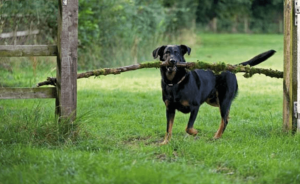
Any activity that results in success will be repeated, and those that don’t or have negative outcomes will be avoided.
The most least effective method to retrieve a dog that has got off leash is being overly excited or supportive when this happens.
Lower the level of your excitement when this happens and find more enticing ways to get your dog back on leash such as dog treats.
Be stern with your approach and firmly voiced when you call them back.
When learning how to off leash train your dog, a useful and maybe life-saving command for your dog to learn is to learn to come back to you no matter what.
Dogs are naturally interested, therefore it’s crucial to establish in them a strong desire to respond to your calls at any time.
To make training sessions as enjoyable as possible for your dog, keep in mind to provide lots of praise.
Off leash dog trails near me
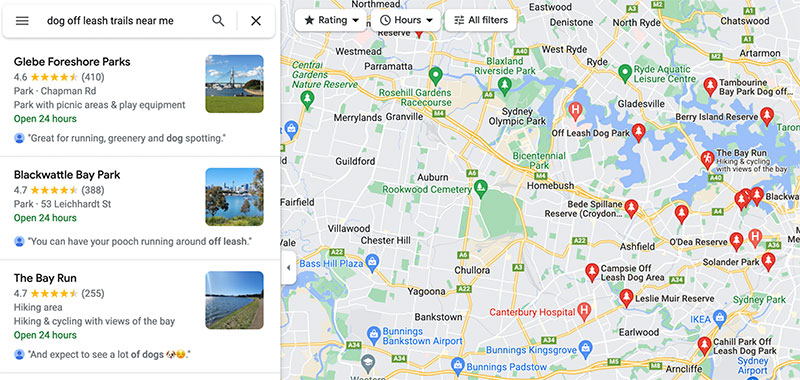
If you are looking for off leash dog trails near me, the best option is open Google maps on your phone and type in “off leash dog trails near me”. This will bring up a list of the closest outdoor dog trails in your area closest to your current position.
Off leash dog beach near me
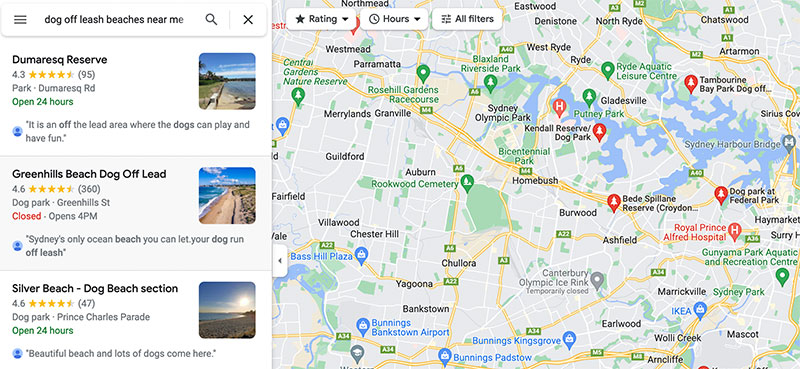
If you are looking for off leash dog beach near me, the best option is open Google maps on your phone and type in “off leash dog beach near me”. This will bring up a list of the closest locations in your area for off leash dog beaches based on your current position.
We really hope you enjoyed this article on what do you do if an off-leash dog approaches you while you are walking a dog. If you did please take a look at some of our other articles including Dog friendly caravan parks WA – Pet friendly caravan parks Western Australia, Dog friendly road trips WA – Pet friendly road trips Western Australia and Dog friendly accommodation SA – Pet friendly accommodation South Australia.







